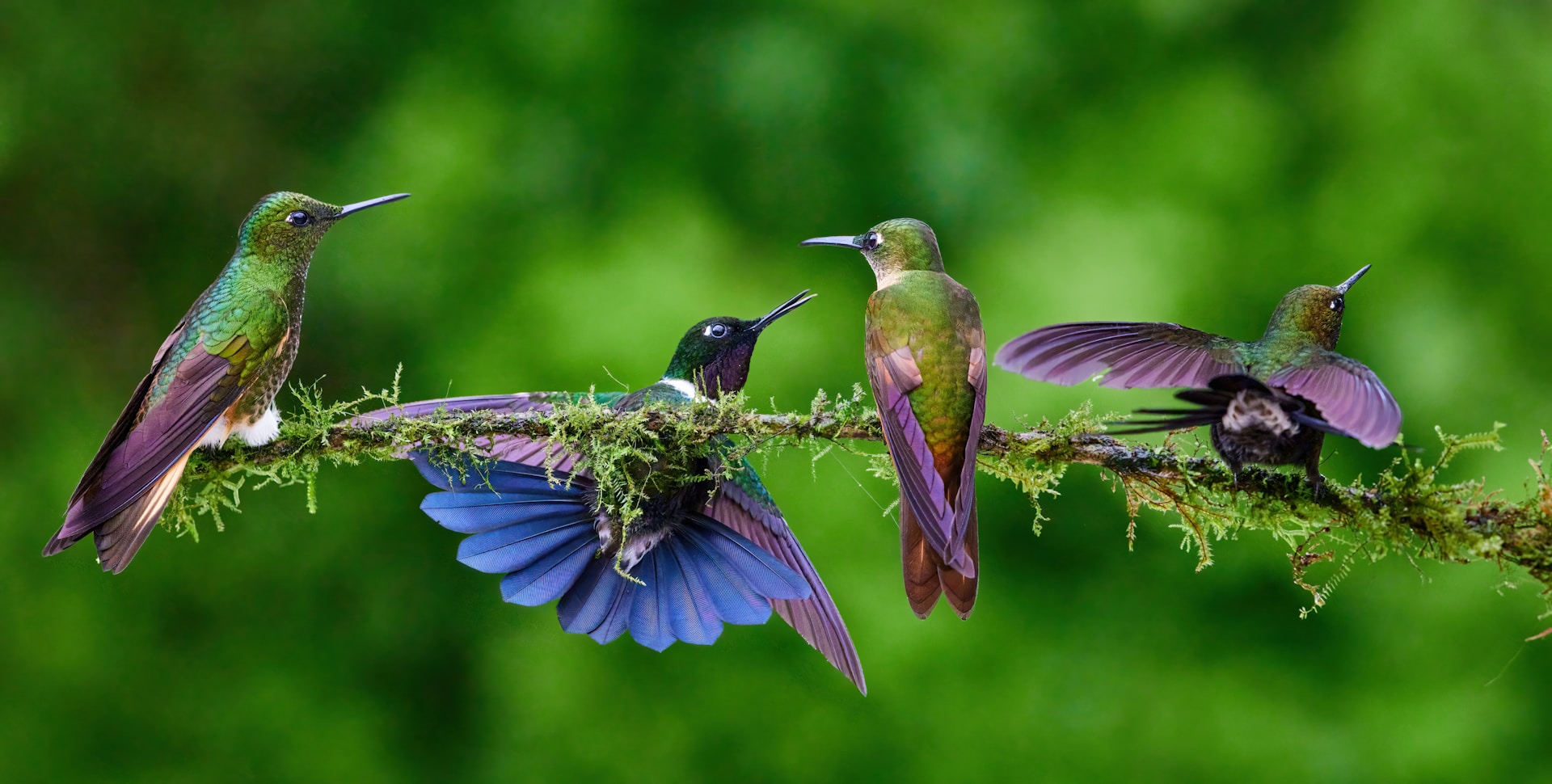Ensuring the Well-Being of Hummingbirds: Navigating Territorial Behaviors and Supporting Senior Hummingbirds
Introduction
Hummingbirds, with their iridescent plumage and rapid wingbeats, captivate the hearts of many outdoors enthusiasts across the USA. These tiny marvels, although seemingly delicate, are resilient creatures with specific behaviors and needs that can sometimes be perplexing. Understanding these behaviors is key to supporting their well-being, especially concerning their territorial disputes and care for older hummingbirds.
Recognizing the importance of managing these behaviors can foster a more harmonious environment, ensuring these delightful avian visitors continue to brighten our gardens. This article delves into hummingbird behavior, care strategies, and tips to create a supportive habitat.
1. Understanding Territorial Squabbles
Gold Nugget: Territorial behavior is a natural and common phenomenon among hummingbirds.
Hummingbirds, particularly males, are fiercely territorial. Their displays include chasing, charging, and diving at any intruders that encroach upon their feeding territory, which, interestingly, also plays a role in their courtship rituals. These behaviors can be observed at feeders where multiple birds compete for resources.
To reduce conflicts among these feisty birds, one should employ optimal placement strategies for multiple hummingbird feeders. This involves placing feeders far apart to prevent one bird from monopolizing the food sources. Key points to consider include:
- Placement in highly visible areas but not overly exposed.
- Maintaining a safe distance (10 to 15 feet) from cover like trees or shrubs.
- Keeping feeders accessible for observation and maintenance.
- Regularly changing nectar to prevent spoilage.
2. Identifying and Supporting Senior Hummingbirds
Gold Nugget: Recognizing senior hummingbirds – chonky appearance and haggard looks.
While the average lifespan of various hummingbird species in USA is typically around 2 to 4 years, some can live longer under optimal conditions. Senior hummingbirds may appear slightly plumper and more worn than their younger counterparts. Supporting these elder statesmen involves providing accessible and comfortable feeding options.
Consider adding perches in shaded areas near feeders to give older birds a place to rest and eat with ease. This added support can make a significant difference in their daily survival and overall health.
3. Managing Feeders and Nectar During Cold Weather
Gold Nugget: Heated pads for feeders can be a game-changer, especially during colder months.
Hummingbirds, such as the Anna’s species in Northern Arizona, sometimes face harsh winter conditions, with temperatures dropping to single digits. In such scenarios, keeping feeders operational is crucial. Utilizing heated pads can prevent nectar from freezing, ensuring food availability even during cold snaps. Here are some practical tips:
- Use wide-bottomed feeders for better heat distribution.
- Employ small bungee cords to secure feeders and maintain stability.
These strategies not only aid in the survival of hummingbirds during winter but also ensure continued enjoyment watching them in action.
4. Strategies to Minimize Aggression
Gold Nugget: Adding multiple feeders and choosing feeders with fewer perches can help disperse aggression.
To tame aggressive behaviors often displayed by dominant males, such as the notorious “lil ruby-throated tyrant,” one effective approach is to increase the number of feeders and select designs with fewer perches. This disperses the birds and reduces competition for resources.
Another technique is to strategically place feeders out of each other’s direct line of sight. This can significantly diminish territorial disputes and create a more peaceful feeding environment.
5. Dealing With Injured Hummingbirds
Gold Nugget: Observe and assist injured hummingbirds by providing a safe environment and contacting wildlife rescues when needed.
Hummingbirds are delicate and injuries, particularly from window strikes, are common. If you encounter an injured hummingbird, here’s how to assist:
- Gently capture the bird and place it in a quiet, dark container to reduce stress.
- Provide food and shelter, and closely monitor its recovery before release.
- Contact a wildlife rehabilitation facility for expert assistance.
For instance, a hummingbird flying into a house can be disoriented. By following similar steps, you can help it recuperate and return to nature swiftly.
6. Encouraging a Friendly Environment
Gold Nugget: Planting hummingbird-friendly flora such as honeysuckle and hibiscus helps create a naturally supportive environment.
Creating a garden filled with hummingbird-friendly plant species for US gardens can significantly enhance the well-being of these birds. Key plants include:
- Bee Balm (Monarda spp.)
- Coral Honeysuckle (Lonicera sempervirens)
- Cardinal Flower (Lobelia cardinalis)
- Scarlet Sage (Salvia coccinea)
Maintaining feeders with proper sugar water (1 part sugar to 4 parts water, no dye or additives) and keeping them clean will also encourage frequent visits. This creates an environment conducive to hummingbird health and longevity.
7. Expert Insights: Hummingbird Rehabilitator Tips
Gold Nugget: Hummingbirds zip past humans not to attack but to protect their food sources.
Insights from experts reveal that these birds’ perceived aggression towards humans is merely a defense mechanism. Additional feeders during cold snaps are crucial to ensure all birds have access to food. For constrained spaces, optimal placement strategies for multiple hummingbird feeders can optimize feeder use. Key points include:
- Situating feeders in visible yet safe areas.
- Placing them near shelters but accessible for maintenance.
- Using visual markers to prevent window collisions.
These practical solutions from rehabilitators can debunk myths and provide actionable tips to foster a safe, nurturing environment for hummingbirds.
Conclusion
Understanding and managing hummingbird behaviors is essential for their welfare. From reducing territorial squabbles to supporting senior birds, the strategies outlined foster a bird-friendly habitat that benefits both hummingbirds and observers alike. Implementing these tips can transform your garden into a haven for these enchanting creatures.
We invite you to share your experiences or additional tips in the comments section. For more insights on bird behavior and welfare, subscribe to our blog and follow us on social media for the latest updates on hummingbird conservation and care.

